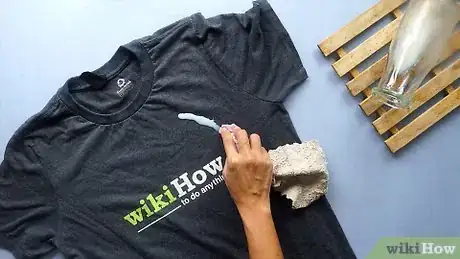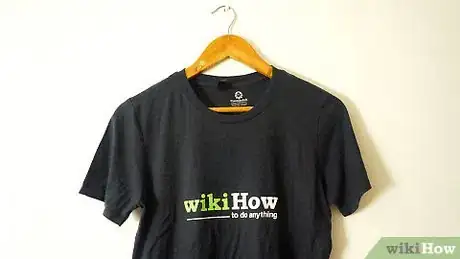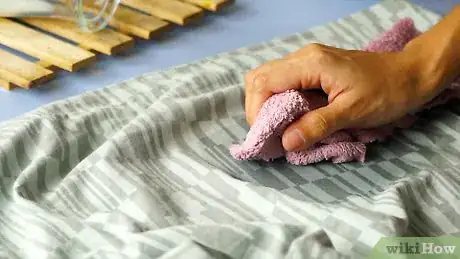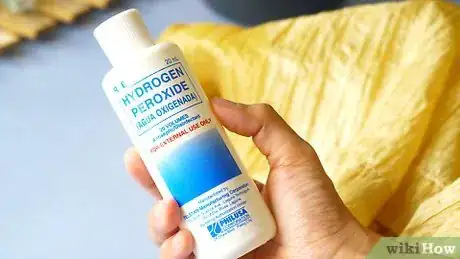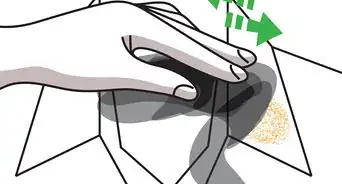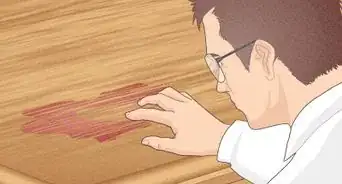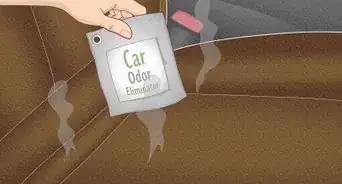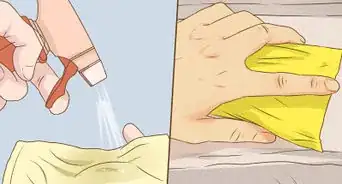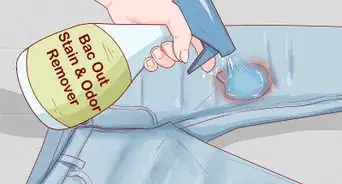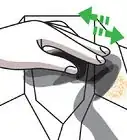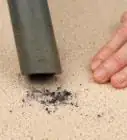This article was co-authored by wikiHow Staff. Our trained team of editors and researchers validate articles for accuracy and comprehensiveness. wikiHow's Content Management Team carefully monitors the work from our editorial staff to ensure that each article is backed by trusted research and meets our high quality standards.
The wikiHow Video Team also followed the article's instructions and verified that they work.
This article has been viewed 74,412 times.
Learn more...
Staining your favorite clothes is never fun. Milk is one of those drinks that can leave large stains that can be hard to get out. Whether you've spilled milk on clothing, furniture, or your carpet, there are ways to remove it using commonly found household products. By using the right techniques and having the right cleaning supplies, you can remove pesky milk stains without damaging the fabric under it.
Steps
Washing Fabric or Clothing
-
1Blot the area as soon as possible. When removing milk stains from clothing or fabric, it's important that you blot the stain as soon as possible. Letting the milk dry into the fibers of your clothing makes it harder to remove the stains later. Soak a cotton rag or sponge with cold water and blot the stain in the area where you spilled the milk.[1]
- Rubbing and scraping the milk stain may make the stain worse.
-
2Soak your clothing in cold water. If you have a bad milk stain, soak your clothing in a bucket or tub of cold water for five minutes. Soaking a milk stain will help loosen up the fabric and will prevent discoloration when you wash your item. If the milk has hardened onto your clothing, you can use a flat edged tool to scrape it off.
- Using warm or hot water can make the stain worse, so avoid doing this.
- For really bad stains, soaking your clothing overnight could help remove the stain.[2]
Advertisement -
3Pretreat the stain with a liquid detergent or fabric cleaner. Pretreat the area by rubbing detergent or another fabric cleaner into the stain before washing it. You should only need a couple of drops. As an alternative to liquid detergent, you can use a solution of equal parts baking soda and water. Pretreating the stain before washing it will help lift the stain from the fabric.
- Other cleaners, like Oxiclean, can also do a great job at reducing the appearance of milk stains.[3]
- Cleaners with enzymes do a great job of removing stains but could affect those with sensitive skin.
-
4Wash the item of clothing or fabric. Put the clothing in a washing machine as you normally would. If you don't have access to a machine, you can wash the item by hand. Once the item has been washed, check the area to see if the stain has washed out. If it's still there, pretreat and wash your piece of clothing again until you no longer see the stain.
-
5Dry your clothing. Do not dry your clothes if you can still see the milk stain. This can set the stain, and make it harder to remove later.[4] If the stain is visible, continue to pretreat and clean it until the stain is gone. Check the item's clothing tag to see if it's safe to put it in a mechanical dryer. If it's not, then you can pin up your clothes to dry them.
Eliminating Upholstery and Carpet Stains
-
1Remove furniture covers after the spill occurs. If you spill milk on a couch cushion, it's important that you remove the cover as soon as possible so that you can clean it separately. Allowing the spill to seep into the cushion will make it harder to remove later.
-
2Blot the area with cold water. Before you apply any cleaners to the stain, see how much of the milk you can extract from the carpet or piece of furniture by blotting it.[5] Use a cotton rag or sponge and run it under cold water before trying to blot it. Do not rub the stain or you may make it bigger.
-
3Mix liquid dishwashing soap with cold water. Use one tablespoon (14.78 mL) of liquid dishwashing detergent with two cups (480 mL) of warm water. Stir the solution until it's well mixed. This solution will help you extract any milk left over from blotting it with water.[6]
- The solution should be sudsy when it's fully mixed.
-
4Blot the stain with a rag dipped in the detergent solution. Dip your cloth into the solution and get the cloth saturated. Apply the wet cloth to the stain so that you transfer the solution onto your carpet. Continue to blot the stained area of your carpet until it's no longer visible.
-
5Treat stubborn stains with ammonia and water. If you can't get the stain out using soap and water, you may have to use stronger chemicals. Mix two cups (480 mL) of warm water with one tablespoon (14.78 mL) of ammonia to create your solution. Get a new rag and dip it into the solution. Once the cloth is saturated, continue to dab the area that is stained.[7]
- Use gloves when handling cleaning chemicals or supplies.
- Never mix chlorine bleach with ammonia because it creates a dangerous chemical smoke that has harmful health effects.[8]
-
6Rinse the area with cold water and dry it. Use a fresh rag and dab the area with cold water. The goal is to remove any cleaners or ammonia that you used to lift the stain from the carpet. Once you've sufficiently blotted the area, no more suds or cleaner should remain on the carpet. Finish the area by using a dry rag to get any excess water that remains. Hanging your rug up will help it dry.[9]
Removing Stains from Non-Washable Fabric
-
1Sponge the area with water. If the tag on your clothes says "dry clean only" you shouldn't put them in a conventional washing machine. Instead, sponge the area with cold water. If the stain is not coming out, you can lubricate your sponge with mineral oil or lard to help lift the stain from the fabric. Make sure to lubricate the stain thoroughly and keep it wet as soon as you notice the stain.
-
2Apply a couple of drops of mild liquid detergent to the stained area. Create a mixture using 1 teaspoon (4.92 mL) of a mild liquid detergent with one cup (240 mL) of water. Using a dropper, carefully put some mild detergent on the surface of your stained clothing. You only need a few drops before sponging and dabbing the area again. You should start to see the stain begin to lift. Continue to sponge the area with water and mild detergent until you lift the stain.
-
3Apply hydrogen peroxide for chocolate milk stains. You can use 3% hydrogen peroxide to remove stubborn chocolate milk stains. Use the dropper again to apply the hydrogen peroxide to the stain, before blotting up the area with a spare cloth. Continue to do this until you lift the stain from the piece of clothing.
-
4Flush the stain with cold water and allow it to dry. Once there is no visible sign of the stain, you can flush the mild detergent off of your shirt with cold water. You don't need to get the entire garment wet, you only need enough water to flush the chemicals from your shirt fully. Do not allow visible stains to dry on non-washable fabric because they will be harder to remove later on.
- When you're done, you can take your clothes to a professional dry cleaner to ensure that the stain is completely removed.
Things You'll Need
- Water
- Bucket
- A flat-edged tool to scrape off hardened stains
- Fabric cleaner or liquid detergent
- Cotton rag or sponge
- Gloves
- Hydrogen peroxide (for chocolate milk)
References
- ↑ http://spotremoval.coit.com/milk-stain-removal
- ↑ http://www.stain-removal-101.com/milk-stains.html
- ↑ http://trimesterfashion.com/remove-breast-milk-stains-clothes/
- ↑ http://www.stain-removal-101.com/milk-stains.html
- ↑ http://web.extension.illinois.edu/stain/staindetail.cfm?ID=16
- ↑ http://www.goodhousekeeping.com/home/cleaning/tips/a15883/stains-milk-may07/
- ↑ http://spotremoval.coit.com/how-to-remove-milk-from-carpet
- ↑ http://www.goodhousekeeping.com/home/cleaning/tips/a15883/stains-milk-may07/
- ↑ http://spotremoval.coit.com/how-to-remove-milk-from-carpet
